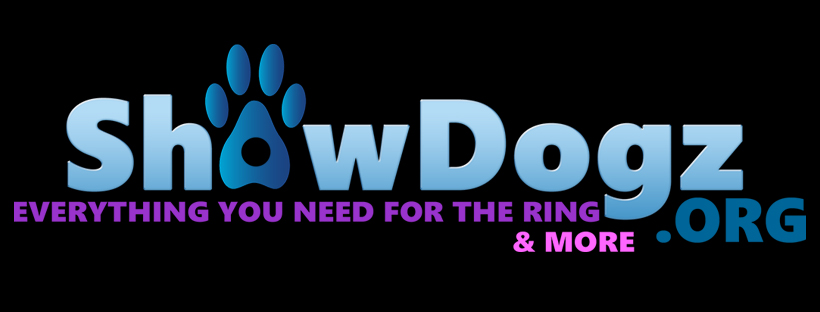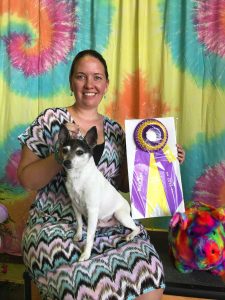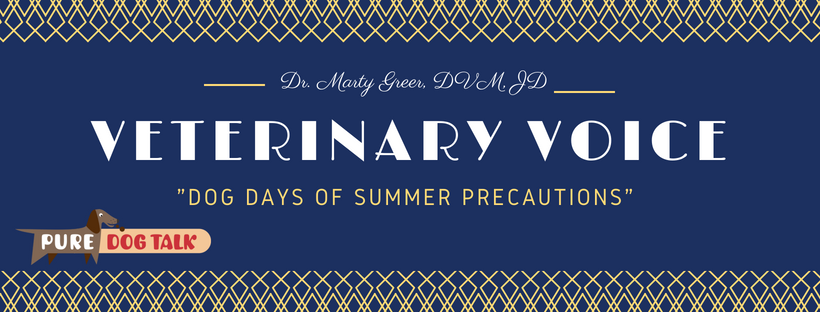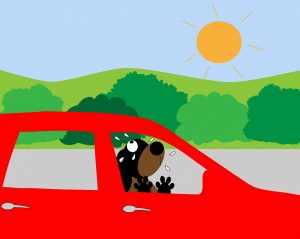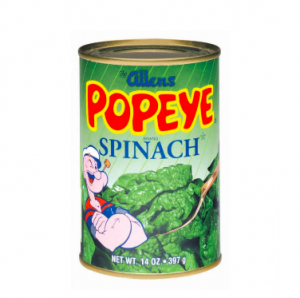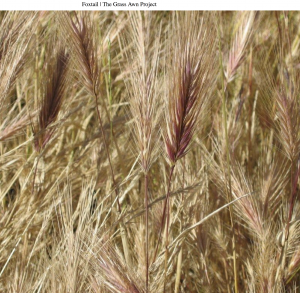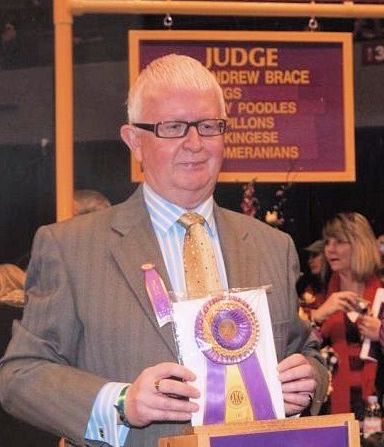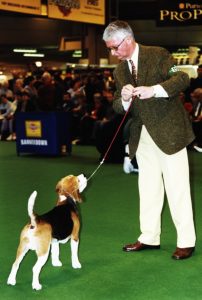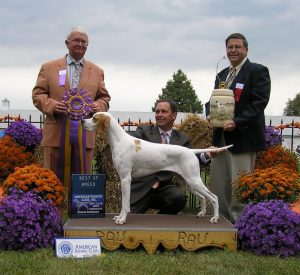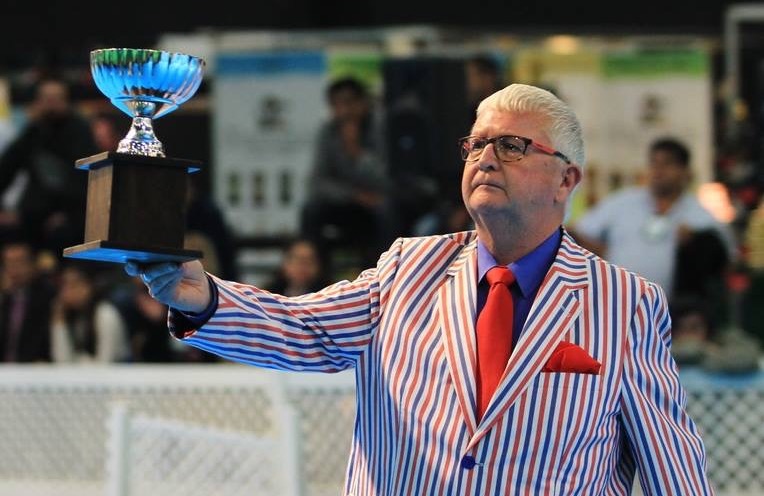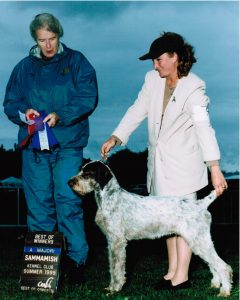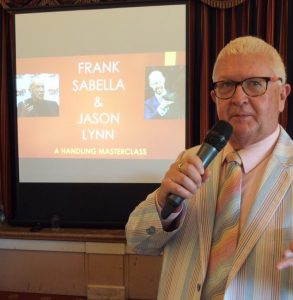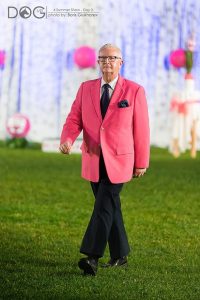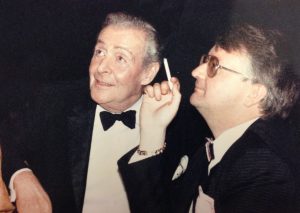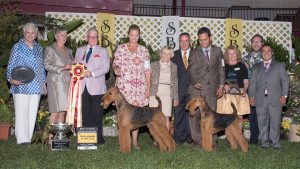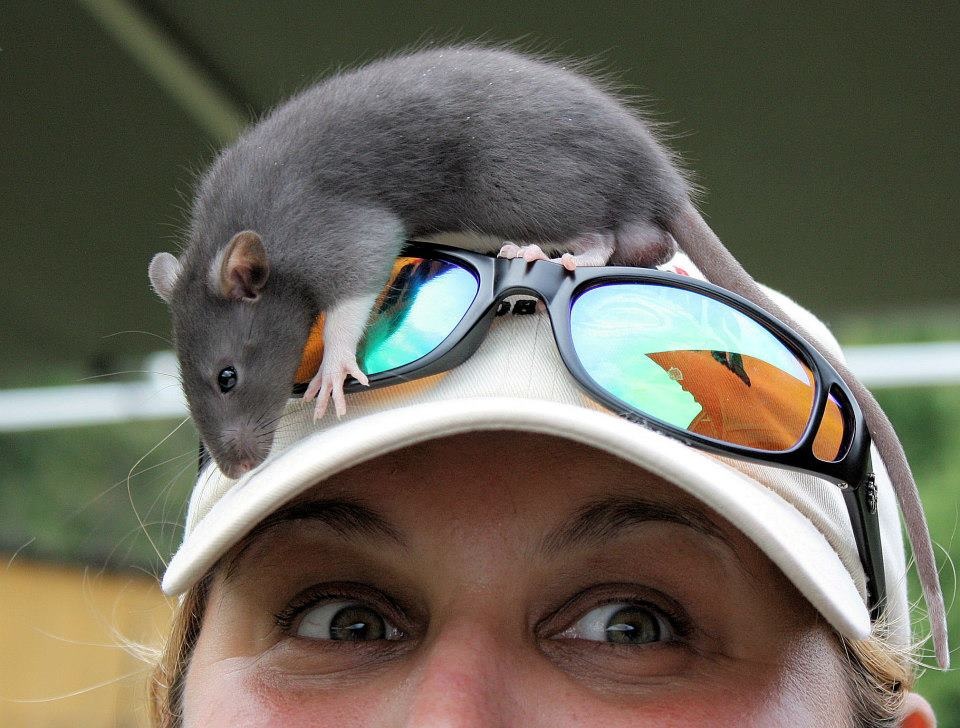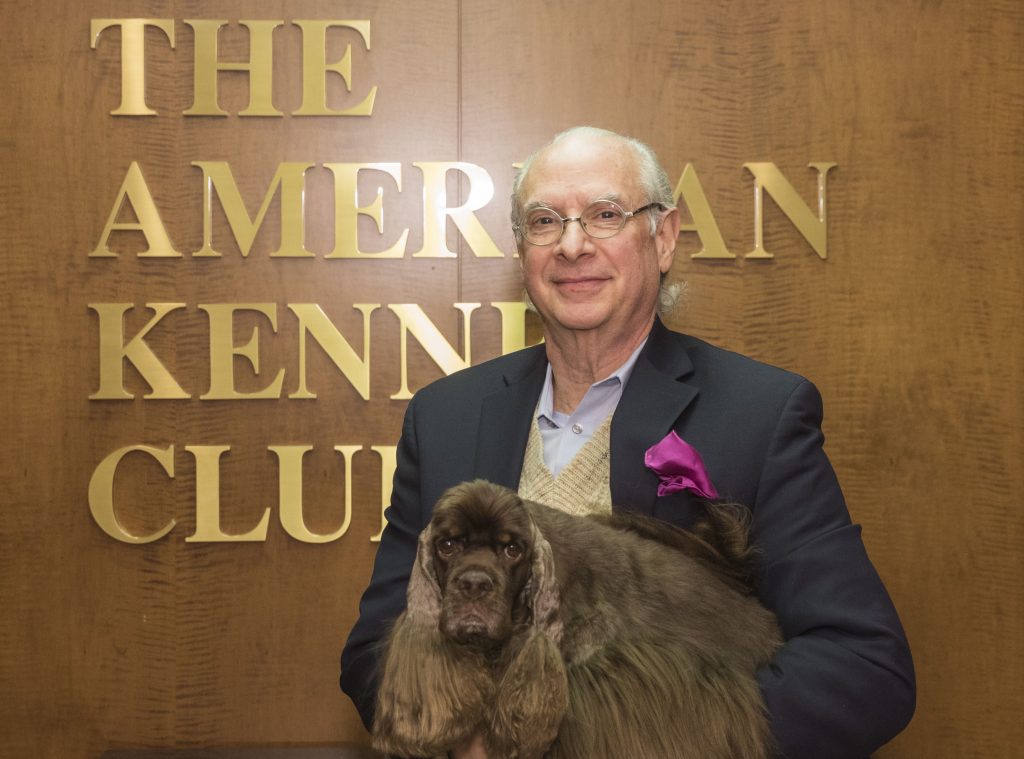200 – Celebrate 200th Episode with a Positive Outlook
200th episode? Celebrate with a positive outlook
Let’s talk about the “thrill of victory and the agony of defeat.” And making a positive outlook YOUR approach to life and to this sport.
How can this be possible???
Wasn’t it just yesterday that Mary randomly set up next to me at a dog show in Southern California and we started yakking about dogs and mentors and education and possibilities??
In fact, it’s just over two years since I first learned there WAS such a thing as a podcast. Never mind listened to one… lol
Since our debut in November 2016, Pure Dog Talk has been downloaded well over three hundred THOUSAND times! Yikes! We’ve aged out of the 12-18 class and we’re running with the big dogs, expanding our reach to more purebred dog enthusiasts every single day.
In recognition of the occasion, I thought I’d stop by for a personal one on one visit with all ya’ll.
Accentuate the PAWsitive
This post went up to rave reviews on a social media group. Many thanks to the original poster for permission to share here:
Barbara Eymard
A reflection on my first 9 months in the dog show world.
I have read lot of complaints about the cost of dog show. 2 tickets to the movies can cost more than one day entry fee for a dog and additional cost for each family member. Hanging out a a dog show with several family members much cheaper
For most part dog show parking and admission for friends and family is free. I live in an area where we do have a number of shows in day trip driving distance.
For my admission fee I get 8 hours of meeting and talking to people with a like interest, my dog evaluated, entertainment, shopping
Food is cheaper then at the movie dinner theaters. I come home win or lose happy and exhausted.
My granddaughter and husband often spend the day with me. Guess what, we talk, no TV and limited cell phones, we spend time with each other and our dogs.
Now compare the cost of a day at the dog show and the day at an amusement park which does mean travel and a hotel for me. The dog show still comes out cheaper and a happier event.
Costs of everything have gone up. my quarter allowance use to be able to buy 5 candy bars.
I use comparison shopping when spending my entertainment money. Dog shows come out as a good deal.
Thank you dog show world
Barbara NAILED it!! Would that several tens of thousands more exhibitors shared her attitude. PLEASE join us in this …. Joy and thankfulness are contagious!
12-Step Program
I wrote the following as a New Year’s resolution column several years ago. I think it is still applicable today and now is as good a time to celebrate a new year and a new you as any!!
I once read a line that has stayed with me for years. Essentially, it said, “The man who can focus his entire attention on one single problem for just 20 minutes can rule the world.”
In our hectic, over-scheduled, under-funded, hyper-stimulated world, this is, indeed, a very difficult challenge. Especially so in the dog world, where we are all juggling dogs, life, work, family and personal time in a constant battle to not drop anything.
To offer focus in this never-ending war against time, we have created the “12-Steps to a Happier You in the Dog Fancy” inventory.
One step, each month, establishes the habit. Then just keep building, brick by brick, adding one new goal each month.
January — Say “Congratulations” to the winner or “Thank You” to those who congratulate you. And MEAN it! Yes, every time. Yes, even when the winner is your most bitter enemy, actually, especially then.
February — Watch one breed, other than your own, from start to finish, at every dog show you attend.
March — Instill and enforce the “first to look at their phone during dinner pays for everyone” rule each time you go out to eat, whether at a dog show, with co-workers or family. Experience the miracle of direct human interaction.
April — Seek out a club official — show chair, chief ring steward, hospitality chair, etc — at each dog show you attend and thank them, personally, for their hard work and compliment them on a specific piece of the show which you particularly liked. Resist the urge to complain about anything.
May — Volunteer to help at one show. Even if it is an hour of ring stewarding, helping with clean up or set up, judging a fun match, simply restocking the candy dishes or picking up someone else’s poopie. Do one thing for a club for no better reason than you can.
June — Help someone new. It could be as simple as assisting someone with an armband. Maybe a promising youngster with a new puppy shows up and would welcome five minutes of *kind* and constructive direction. It is important here to understand the concept of help. Focus on the positive. Just be nice.
July — Organize a potluck. Get a whole bunch of people together at someone’s RV or grooming space, even invite someone you don’t know well, break bread together. Laugh. Tell stories. Talk dogs. If there is a water balloon fight (or an inflatable unicorn) somewhere in the mix, this cannot be a bad thing. Remember, we’re still carrying each month’s goal forward, so March’s “no phone” rule applies. By now, it should be ingrained and much easier to implement.
August — Read the standard for a breed about which you know nothing. Then, at the next show, while continuing your February goal of watching a new breed, go find the breed you read about. See if you can apply elements of the standard to dogs in the ring.
September — Go back to school … In your own breed. Re-read your breed standard. Memorize it. Commit the entire standard to memory so thoroughly that you can quote entire sections verbatim. Then pull a random dog out of your pack, stack him up and go over him piece by piece according to the standard. Try very, very, very hard to be objective and not make excuses. Simply see what’s there and what isn’t.
October — Take the skeletons out of your closet. Look at them in the cold light of day. Whether as a breeder, handler, exhibitor or judge, take a look at your past mistakes, acknowledge them, then burn them at the stake and move on!
November — Talk turkey. Get off the internet blogs and approach a more experienced person about a question in your breeding program, grooming routine, handling skill set, whatever. Talk to them in person. Invite them to lunch or drinks. Do not expect miraculous secrets, but acknowledge and respect someone outside your comfort zone. You learn something new every day!
December — Give the gift of your time and energy to a local animal shelter, rescue group or other doggie emergency support system.
This 12-step program is guaranteed to bring enhanced enjoyment, satisfaction, curiosity, knowledge, camaraderie and success to anyone’s dog show calendar.
Laughter is the Best Medecine
Our Last Word today comes with special thanks to Pure Dog Talk Patron Andi Jalensky for the idea!!
I talk to exhibitors all the time who are terribly nervous to show their dogs. I always try to cheer them up by telling them funny stories of things that have happened to me over the years. If laughter is the best medicine, laughing at yourself is a silver bullet.
One of my all-time favorite stories happened when I’d just moved from Washington to Nebraska. (No, that’s not the funny story.) I traveled up to Minnesota for shows a month or so later. I didn’t have any clients yet and was just showing my own GWP bitch special. I didn’t know any of the local folks and only a very few of the handlers.
We line up for the group ring, judged by Dana Cline, with Smoke and I in the lead. I take off, long strides, dog floating, hoping to make that all-important great first impression. About midway around the ring my shoe flies off my foot and lands in the center of the ring.
What can you do but keep running?
So, I go all the way around, one shoe on, one shoe off. Stack my dog and then wait for all the dogs to trail in behind me so I can go find my shoe. Carlos Puig, God love that man, comes in last with the Clumber. He spots my shoe, runs to the center of the ring, picks it up and waves it over his head yelling, “Cinderella? Cinderella!”
As the audience roars, I run out, curtsey, grab the shoe and run back to stack my dog for the exam.
We didn’t get a ribbon that day, but I’ve never forgotten it and still laugh every time I think about it.
And yes, I threw that pair of shoes away!
Another favorite moment, happened at a tiny, out of the way show in far eastern Illinois. (Why, you ask, are all of these stories from the Midwest? Hmm, good question!)
I was showing a top-winning Pug named Louis. I’d won a nice breed and a pretty good group. I traveled by myself at the time and had no assistant and, again, nobody I really knew that well was at the show. We step in to the ring to go around last in the Best in Show lineup under inimitable Sandra Goose Allen. I give Louis a little tug on the leash as his signal to get ready to go. And the stitching on the Resco unravels like it was planned that way.
Oh, good grief.
Fortunately, he was a great little dog and waited while I hastily improvised a way to get around the ring still connected to one another. So, of course, did the judge and the entire audience. Not your best first impression in the BIS ring! I was grateful to have a few minutes before his turn on the table, but a small show, light crowd and no real support system meant a panic-stricken moment trying to find someone, anyone to send scrambling to my tack box in a whole ‘nother building, find a new leash and bring it to me. Thank God for the kindness of strangers! Some blessed soul managed to find my set up and get back in time…. With the Clumber special’s leash and collar. Yes, it was too big, but better than the broken shoe string I had as an option.
I threw away the leash, too.
GWP National in Oregon. The owners of my open dog had taken him out for a run before the show to tune him up for the field trial that started the next day. It’s coming time to show the dog and they are nowhere to be seen. Literally minutes before his class is called, they arrive, breathless. With a lame dog. Seems he cut a pad running on the rocks near the show site. A common occurrence in bird dogs, but really bad timing for a show dog. Mom was there and happened to have super glue in her purse. I’m holding the leash, the ring steward is calling his number and my assistant is on hands and knees blowing frantically on the dog’s foot, hoping the super glue will dry and the dog won’t be stuck to the floor. Wink went Winners Dog that day with a superglued pad and a huge sigh of relief that he wasn’t permanently attached to the show ring mats.
Super glue. Who knew? Never leave home without it.
Showing the BIS Clumber, back in the day. He’d won a very competitive Breed at the Portland shows the first year Animal Planet was filming for TV. (OK, I guess not ALL of the bad stuff happened in the Midwest…) I’d been running around showing other dogs and came back to the setup to get him ready for the group which started in an hour. I could smell the disaster before I even opened the crate. Somehow, no one had noticed he’d gotten ahold of a piece of liver somewhere (to which he had a famously violent reaction). We can laugh about it now, but I’m still not sure, to this day, how we got him bathed and dry and tummy settled and in the ring on time. I kept having nightmare visions of a bad-potty-on-national-TV moment. He won a gorgeous Group 2 under Howard Yost that night, but in my mind’s eye, my strongest memory is the refrain that ran through my head the whole 30 minutes, “Charlie, PLEASE don’t have an accident on the pretty carpet!”
Poopy, sometimes quite literally, happens. You deal with it and move on.
There are so many more stories, mine and others. The point being, relax! It’s not world peace. It’s a dog show.
199 – New Resource Launched for Dog Community
New Resource Launched for Worldwide Dog Community
Third generation dog breeder Cheryl Krajcar has created a fascinating new community on the information super highway, just for dog people. Her fledgling start-up has “great bones” and tremendous potential for dog people everywhere.
On the chain gang
“I remember, as a little girl, being drug to FT, winding up on the “chain gang” (stake outs for field trial dogs) after getting in trouble for turning dogs loose,” Krajcar said with a laugh. “I decided I wanted nothing to do with that and went to dog shows with my aunt.”
After years handling dogs for others, living with a rough Collie, Flat Coated Retrievers and more, Krajcar found herself full-circle, back at horseback field trials. Today she is a licensed field trial judge, owns Shelties and is using her computer programming skills to create this in-depth resource, Showdogz.org.
“It’s time to bring people together as a community,” Krajcar said. “I love what the kennel clubs around the world do… AKC, CKC, FCI, The Kennel Club. They all have tremendous resources. But there is no place where the entire sport can come, get together, and be involved. This website allows the worldwide community of dog people to come together to support the efforts of their kennel clubs.”
Avoid the drama
There are plenty of groups on social media, Krajcar noted, but they don’t meet the needs of the fanciers because there is too much unpleasantness. And not everyone is on Facebook.
“The cattiness is out there. Let’s make it friendly, let’s build the community that people want to be a part of,” Krajcar said. “There’s something for everyone.”
“I really want to focus on the owners,” Krajcar said. “There are no good dogs without good owners. Owners are the ones breaking their backs, putting dogs out in the community. They are the ones supporting the events.”
Fully translatable chat rooms for worldwide conversation on Showdogz.org allows people around the world to visit, find mentors, find dogs or reach out to rescue and more.
People buy the dogs they can find
“We have all these doodles, mixes, being advertised in the newspaper and on Craigslist,” Krajcar said. “That’s the only thing people can find when they’re looking for a dog. What are they going to buy? They’re gonna buy what’s available.”
The site also includes an emphasis on juniors and mentors.
“Juniors are the backbone of the sport. They are the next generation,” Krajcar said. “I made my own way, but I had a lot of people that came along to support me. Participating in juniors gives kids such advantage in the world.”
Advertising opportunities on the site for breeders, show dogs, artists and more are priced to keep them at a realistic price point.
“It’s not about money,” Krajcar noted. “It’s about what I want to do for the sport, which is bring everybody back together. Social media is tearing us apart. I want to provide a resource for everyone.”
Stick around to listen to Allison Foley’s Tip of the Week from the Leading Edge Dog Show Academy. Allison gives us a run down on Dry Shampoo and its many uses prepping for the show ring.
198 – Vet Voice: Dog Days of Summer Precautions
Dog Days of Summer Precautions
Dr. Marty Greer, DVM takes us through a few summer dangers, how to avoid them and some excellent tricks to solve some of them. Listen to find out why canned spinach and Dawn dish soap are on her “must have” list.
Hot cars
“Nobody leaves a dog in the car on purpose,” Greer said. “They get distracted and lose track of time.” She recommends keeping a leash draped around your neck as a simple reminder. And to never trust the AC in a running car.
Leave a note on the car’s dash with your cel phone number in those instances when you need to make a quick dash inside a store, Greer suggested, so people won’t try to ‘rescue’ a dog that doesn’t need it or in case of actual emergency.
Blue-green algae
These toxic algae blooms in still water are not common, Greer said, but they are dangerous. She recommends keeping Dawn dish soap on hand to wash a dog that has been in questionable water. And not allowing dogs to drink water that is not free running and clear
Canned spinach??
Greer said this easy, cheap household staple can be fed to dogs who have consumed small, sharp objects that could cause gastrointestinal distress like sharp bones from a barbecue.
“The spinach wraps itself around the item and allows the dogs to safely pass small sharp items,” Greer said. “Every year we have dogs that don’t have to go to surgery thanks to this — diamond rings, you name it.”
Cookouts and holiday festivities are always of concern with our dogs. She noted that corn cobs are a particularly common source of bowel obstruction.
Foxtails
These nasty weed seeds are deadly dangerous to our dogs. They can penetrate skin and migrate anywhere. Commonly they become imbedded between a dog’s pads. In the best case scenario, the seeds simply abscess and make a lame dog. Seeds can get in the dog’s ear, working their way down to puncture the ear drum and cause painful ear infections. Worst case, Greer noted, is when foxtails travel to the lungs from the nose, or even feet, and cause a pneumothorax. Saving the dog’s life then requires dangerous and extremely costly surgery.
Greer recommends prevention by checking your dog after every outing in the field and learning to recognize the dangerous plants by visiting http://www.meanseeds.com/, a website created by a client of hers in Wisconsin.
Ticks
“These are nasty creatures we want to avoid,” Greer said. “Changes in climate have impacted the spread of ticks.”
An ounce of prevention, again, is worth a pound cure. Greer suggests that dogs be on flea/tick preventative year-round and that the current products are safe and effective. She is happy to provide current information about products that are safe to use with dogs in a breeding program. Visit https://www.smallanimalclinic.com/ for more information.
Ticks are vectors for zoonotic diseases including Lyme’s, anaplasmosis, Ehrlichia, Rocky Mountain Spotted Fever and potentially dozens more that as yet are unidentified, Greer noted.
“There are new diseases, even new ticks,” Greer said. “It’s startling how many tick borne diseases out there.” She recommends visiting https://www.capcvet.org/ for more information
Canine flu
Greer’s advice: “Vaccinate. Any dogs in competitive venues or that even leave their houses should be vaccinated. There is no natural immunity in the population because these are new viruses.”
Thunderstorms/fireworks
Talk to your vet about anti-anxiety meds, Greer said. Acepromazine and Benadryl are not anti-anxiety drugs, they just make the dog unable to show you how scared they are, she added.
197 – Local Legislative Liaison Defends Our Rights
New Legislative Advocate in Our Corner
Robert Miller, AKC’s new legislative analyst and outreach coordinator, is a Wirehaired Pointing Griffon breeder of merit and hunter. His background in legislative work and public information is being put to use on the west coast to provide proactive involvement with fanciers.
Legislation is constantly popping up that affects everyone’s ability to do what they want with their dogs, or even have the dog they want, Miller said.
Fight for your rights
“It’s important to recognize that you have to pay attention to that kind of stuff,” Miller warned. “There’s no one fell swoop that will take away all your dog rights. But you’re going to have a lot of little pieces, chips, death by a thousand cuts. Eventually you’ll say I want to get this kind of dog and you can’t because there is breed specific legislation, which is basically animal profiling. There’s a lot of laws that come up, sometimes well-intentioned, that have unintended consequences.”
Miller’s role is to reach out to fanciers, to encourage them to pay attention and speak up.
“We depend on our dog people. They need to contact us when something pops up at the local level,” Miller said.
Miller encouraged folks to take a look at the Toolbox (https://www.akc.org/clubs-delegates/government-relations/toolbox/) on the Government Relations website.
“Sometimes you have to step out of your comfort zone,” Miller advised. “If legislators know it’s coming from constituents, they pay attention, they listen. Local people carry more weight with legislators than AKC. You don’t have to reinvent the wheel. We can help you develop things that are germane to your specific district.”
It comes down to someone trying to tell you what you can and can’t do with your animals, Miller noted.
“Having animals and using them is a basic human right. People have had dogs for thousands of years. There is this recent sentiment that that is abusive. We believe you should be able to have the dog you want,” Miller said.
Get ahead of the curve
AKC is taking a more proactive approach with this new position.
“Being able to respond quickly is advantageous for all dog owners. I’m visiting local kennel clubs. I’ll do whatever it takes to solve the problem or provide education,” Miller offered. “Make friends with local legislators. They’re people just like you and I. Drop by the office. Get to know who they are. The squeaky wheel really does get listened to. Be civil and get to the point.”
The average legislator is probably not an expert on dogs, Miller observed. “If you are involved with dogs, you know a lot. They (elected officials) like it when someone can share their expertise.”
The people who would like to take our rights away are very active, Miller reiterated. “We need to pull a page out of their playbook. Get proactive. Do things. Run for an office, if that’s something you think you want to do.”
And don’t miss Allison Foley’s Tip of the Week from the Leading Edge Dog Show Academy. Potato starch? Who knew?
196 – “Bracing” Talk: Pedigrees, Critiques and Skill
Andrew Brace on Pedigrees, Critiques and Skillful Handlers
In the third and final installment of my interview with international dogman Andrew Brace, he shared his knowledge on reading pedigrees, writing judge’s critiques and the definition of expert presentation in a wide-ranging and brutally honest discussion.
Our conversation also touched on the influence of animal rights extremism on the UK’s “high profile breeds” vet checks. Brace additionally noted the correlation between health issues in our breeds and the increasing tendency for breeders to “take Mother Nature’s job from her.”
Andrew Brace last showed a dog at Crufts 2000 when he retired having handled his BIS winning Beagle, UK Ch Dialynne Tolliver of Tragband.
Breed the best to the best to get the best
“Dedicated breeders are constantly aiming to improve their stock,” Brace said. “Those breeders who think breeding a winner is simply a matter of mating a winning bitch to a winning dog fail to realize the value and implications of the pedigree and do not understand what a valuable breeding tool this is.
“You need to be able to read a pedigree. This is where the truly great breeders score. The pedigree supplies valuable information – provided the reader has researched the dogs who appear in it. (Master) breeders study a pedigree of at least five generations. If they don’t know all the dogs in it personally, they’ll research them by seeking out photographs or simply asking older breeders who are still around exactly where these dogs scored and failed.
“In this way they build up a comprehensive picture of their dog’s ancestry. They will, over a period of time, be able to assess what faults and virtues lie behind their breeding stock. And, perhaps more importantly, establish which dogs were responsible for producing them,” Brace said.
“Correct is not produced by mating two extremes,” Brace added. “A potential parent who lacks in one area should be mated to a dog that excels in that failing. A dog that’s slightly straight behind will not produce perfect rear angulation by mating it to a dog that is hopelessly over angulated. Its chosen mate should have correct angulation.”
“Winning” dog is not always the same as “best” dog
“We have focused on show dogs,” Brace said. “In many breeds, this has meant that dogs that are perhaps a little exaggerated in one way or another have taken the eye of the judge over the dogs who are maybe more correctly balanced or constructed because they have a little sense of drama about them.
“It is our responsibility as judges to reward the correct dog over those dogs that have probably won a ton of best in shows by virtue of the fact that they fly around the ring with their long necks, gay tails and dripping in hair.”
Useful written critiques
“When writing critiques, I think it’s essential to detail the dog’s outstanding virtues but also mention any obvious shortcomings, which can always be done tactfully,” Brace said. “For example, ‘Head like a bucket’ and ‘prefer a cleaner backskull’ – they mean the same thing, but one is more palatable. It isn’t necessary to describe the dog from head to tail but, concentrate major pluses and minuses.”
Listen to renowned judge Ginny Lyne on this topic.
Merge into the background
Andrew Brace judging the American Pointer Club 2007 National Specialty. BOB Ch Cookieland Seasyde Hollyberry, handled by Michael Scott.
“It is little wonder that some of your most successful handlers go on to become outstanding judges,” Brace noted. “The thought process is exactly the same. Handling is the art of emphasizing a dog’s virtues whilst disguising its faults. Judging is all about recognizing the virtues yet getting the faults into perspective.
“Some countries, unfortunately, have produced some so-called professional handlers who have clearly watched a lot of American videos, bought some flashy jackets and race around the ring with dogs of indeterminate quality. They often carry too many dogs to do justice to and its obvious they aren’t kept in the best of conditions. These are the guys that are just doing it to make a buck. They aren’t handlers as I understand the word.
“The best handlers are those who are so skillfully unobtrusive that they just seem to merge into the background. These experts have the ability to project the dog to the judge at first sight,” Brace added.
SPECIAL LEGISLATIVE ALERT: Speak Up in Dallas, TX
SPECIAL LEGISLATIVE ALERT
Wednesday, 6/27 at 9 a.m., the Dallas City Council will consider a proposal that ALL dogs impounded in the city be altered before being returned to the owner. The current law has exceptions for show and performance dogs. This proposal is seeking to do away with that exception.
Show Up and Speak Up in Dallas, TX
“With the recent incident of a stolen van with show dogs, imagine if those dogs were required to be sterilized before being returned to owners,” said Sheila Goffe, AKC Vice President of Government Relations. “These dogs are the future of our blood lines, the future of our breeds. These are not the dogs that are creating what are legitimate problems in the city.”
AKC Government relations has detailed information available here with location, contact names, numbers and emails, talking points and more.
Goffe noted that responsible dog owners want to be part of the community to help the city with the dog issues it has. “Responsible dog owners aren’t the problem. Going after them isn’t the solution. This is a solution in search of a problem.”
Tips and recommendations from Goffe, most of which are applicable in any similar legislative circumstance:
- You are a resident or you travel through Dallas. You are very concerned about the potential of a dog becoming loose by accident or mishap that you will not be able to have returned intact.
- In 2017, 1100 AKC events were held in the state of Texas.
- 150,000 dogs participated in AKC events in Texas just last year.
- Large dog show weekends bring $1.7 million to community.
- People who have breeding licenses, showing dogs aren’t the problem.
- Spaying/neutering a dog owned by another person can be considered taking property. These dogs are valuable property, we appreciate them being treated as such.
- One size doesn’t fit all.
- First offense. Not an appropriate response.
- Boston and Houston have both considered and decided against this type of proposal.
- Physical bodies are what count. Call instead of email.
- Show up! It makes more of an impact. They need to see, visually, that there are a lot of people out there who care. In an election year, especially, that drives home the point.
- Stand or sit together. Wear clothing or color that makes identifiable as a group. Sign in on a topic. Make it known why you are there.
- Speaking on behalf of xyz kennel club and the x number of members.
- Several bullet points, each person focus on one point – 1-3 minutes to speak. Share a story about how this can impact you personally.
- Be respectful.
- Show reasoned argument why proposal isn’t good for the community.
- Suggest alternative. “We’d like to help you, we have services to offer, invite to dog show. Develop a relationship. We’re the dog experts.”
“Our opponents always have representation at these meetings. It is crucial for us to show up and show the strength of our convictions,” Goffe said. “Many people who are involved in shelters and rescue, their hearts are in a good place. They are under-resourced, understaffed and frustrated. We support the good work of shelters. We just want to explain the difference, the nuance between responsible owners and irresponsible ones.”
195 – “Brace Yourself” for a Peek at the Masters
Behind the Scenes Peek at the Masters
Brace (center) moderating a panel with Michael Canalizo, Mary Dukes, Peter Green and a young handler from Europe.
In the second installment of my interview with international dogman Andrew Brace, he shares his personal memories of masters in the sport. His observations and interactions with Anne Rogers Clark, Pat Trotter, Jason Lynn, Frank Sabella, Michael Canalizo, Mary Dukes and more are legend unto themselves.
Brace wrote for top dog magazines from an early age. He had a weekly column in the UK’s Dog World for more than 30 years and later a column in DogNews. He was co-author with Clark of the International Encyclopedia of Dogs, authored several books on his own, hosted television programs and has interviewed world-renowned legends in the sport.
Anne Rogers Clark with one of her many, many “finds”…. 6 month old Cruiser, who would become BIS/BISS DC/AFC JetSet’s RagTop Day at Scotia, JH, CD… handled by Laura Reeves. Bred by Jane (Reeves) Bonaccorso. Owned by Tom & Jodi Quesnell.
Memories of legends
He offers a particularly intimate portrait of his work with Mrs. Clark, interviewing her and writing the Enclyopedia.
“She was extremely frank about all her doubts and fears,” Brace said. “She explained that it was her husband Jim who really created the image everyone got to see. Jim built her up to be a much more self-confident woman who stood tall and proud and eventually got to the stage that everyone wanted to be Annie’s gang. Annie was without doubt the most complex person I’ve ever met. A total one-off.”
In his many media gigs, Brace interviewed top members of the sport, including Mrs. Trotter.
“Pat is such a charismatic lady with infinite knowledge,” Brace said. “One of those people who can just articulate her thoughts so perfectly. Pearls of wisdom just drop from her lips one after the other.”
He also moderated a series of Master Classes, including one with Mr. Lynn and Mr. Sabella.
“Jason was always kind of the quiet guy in the background,” Brace noted. “I was totally amazed. People were just spellbound.”
“When I was a teenager, my friends had posters of pop stars or footballers on their bedroom walls,” Brace recalled. “I, of course, had the famous photo of Frank (Sabella) in a tight white vest on Malibu Beach with Command Performance the white standard poodle in midair. At that time, little did I think I would ever meet this legend, much less become one of his closest friends.”
Currently on a hiatus from judging while taking care of his aging mother, Brace said he misses the chance to “find” a great dog, often as a youngster. He partially makes up for it with the occasional litter evaluation.
“I just adore looking at puppies. I like to see them at 8 weeks as they tend to be in proportion. I want to see them just stroll around yard. In this way, you can see overall shape, how the puppy carries itself, where it puts its feet down. You can see how it interacts with its littermates. So really those qualities we look for in a show dog are there from the start. Every once a while you see something strutting around the yard that just has that extra something, you think yeah…. And then you watch it blossom. That is the future.”
Join us Thursday for our final installment in this wonderful series. I’ve included links to a few of Brace’s books below. You can also check out the YouTube video teaser for the DVD of the Master Class series with Jason Lynn and Frank Sabella. And don’t forget to listen to my interview with Jason here on PureDogTalk if you haven’t already!
Be sure to listen to the end of the show for Allison Foley’s Tip of the Week from the Leading Edge Dog Show Academy about “making your own brand with your trimming.”
194 — Andrew Brace “Totally Obsessed with Dogs”
“Totally Obsessed with Dogs” and Finding Quality
Born to a long tradition of dogmen from Wales, Andrew Brace acquired his first Boxer in 1963 and began judging in the UK while still a young man. A strong voice in the international purebred dog community today, Brace is a long-time breeder, Best in Show judge and author.
Andrew Brace about to judge the European Semi-Final of the Eukanuba World Challenge at the Split Summer Night Shows in Croatia
“I was totally obsessed with dogs ever since I can remember,” Brace said.
As a child he was immersed in the purebred dog scene, stewarding, traveling, reading dog books and joining dog clubs. One of his favorite early memories, after learning his beloved Bruce the Boxer was monorchid and couldn’t be shown, is being given the job of “Honorary Veterinary Steward” — holding the towel for the veterinarian who was checking dogs in for the ring.
Match shows create community
The UK today, Brace said, has 27 all-breeds championship shows, with only five have championship points available for every recognized breed. Many more matches and open shows, where championship points are not awarded, are available. Brace noted that these shows offer a “social exercise” for the exhibitors where they can enjoy a day out and meet up with their friends.
Mentors offer a step up
Andrew Brace with his “idol and mentor”,
Nigel Aubrey Jones, pictured at the dinner
that followed one the Kennel Review
Tournaments of Champions, held at the
Pontchartrain Hotel in Detroit.
“If people are honest,” Brace said, “they all will admit they had help, from their elders and betters. People who gave them a step up. I’m very conscious to try and help young people I see who have a spart, as other people helped me.”
Brace counts fellow Welshman and famed Pekingese breeder Nigel Aubrey Jones as the guiding influence in his life.
“Nigel was a genius. He was my idol and my mentor,” Brace said. “I learned so much from him. He was my biggest critic and greatest supporter. He and Bill Taylor were remarkable gentlemen. Their quest for perfection in breeding Pekingese changed the breed worldwide. To be honest there isn’t a day goes by I don’t miss Nigel.”
An eye for a dog
Things were not very scientific in becoming a judge, Brace noted. “It was very much about being identified as having an eye for a dog and then refining it through careful study and experience,” Brace said.
The UK had many large kennels in those days, Brace added. “I would ask breeders if I could visit to learn about breed. People were always welcoming and keen to share their knowledge, being ruthlessly honest about (the dogs’) faults and virtues.”
“Quality is the difference between pottery and porcelain”
“Nigel drummed in to me the need to have quality in the dogs we reward,” Brace said. “You won’t find the word quality in any breed standard, but it is the one vital ingredient that we all need in our top winning dogs.”
Brace’s judging advice:
- Always look at the overall picture when assessing a dog, rather than dissecting and evaluating individual details.
- The secret is to find virtues.
- Always stand back from a lineup of dogs and study silhouettes.
Join us next week when Mr. Brace shares his knowledge on successful dog breeding.
193 – Barnhunt Founder Nuttall Created Fast Growing Sport
One Person Making a Difference
In just five years of existence, the sport of Barnhunt has taken off like wildfire. Founder Robin Nuttall, the archetype of “one person can make a difference,” said she created the sport to test the natural instincts of her new Miniature Pinscher.
A Doberman Pinscher fancier for many years, Nuttall was accustomed to working her dogs in various sports after they finished their championships. When she acquired her first MinPin to have a smaller agility dog, she discovered they weren’t allowed to compete in AKC’s Earthdog testing.
Prove Working Ability
As she researched the breed more, she discovered they are an old breed, older than Dobermans, and their original job was to rid homes and properties of vermin like rats and mice.
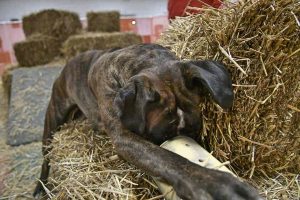
Find the rat!
“I wanted to prove he had the ability to do the job he was bred to do,” Nuttall said. “His aptitude (training with friends who did Earthdog) was amazing.”
“The important thing people need to understand about Barnhunt,” Nuttall said, “is that every decision was based on instinct testing for vermin dogs. We welcome all dogs, but at the core of the sport and why it was created, it is a working instinct test.”
Ironically, the year after Nuttall created the first Barnhunt tests, AKC approved MinPins for Earthdog competition.
“If MinPins had been an approved Earthdog breed, Barnhunt would not exist,” Nuttall said.
Independent Organization
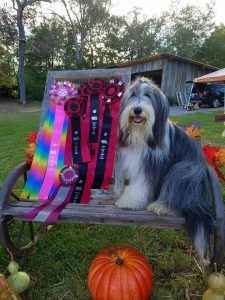
Barnhunt ribbons for Bearded Collie
The Barnhunt Association is an independent organization. While Barnhunt is not an AKC sport, competitors can earn titles recognized by AKC, UKC and CKC, Nuttall noted.
“I have to say, AKC has been amazing and has helped contribute to our success through their support and endorsement,” Nuttall said.
Like most competitive dog sports, Barnhunt features progressive levels of difficulty.
“One of the basic tenets of the sport,” Nuttall said, “is that the rats we use are not harmed. We have a lot of protection for the rats. They are kept safe in heavy duty aerated tubes. Our rats are pets first, but they like small dark spaces.”
Barnhunt seeks to recreate real vermin hunting experiences in which the dogs have to go in small dark spaces. The dogs have to go in to 18-inch wide tunnels that are only as tall as a bale of hay. They have to climb on the straw bales and indicate where the rats are hidden.
“This is a gateway sport,” Nuttall said. “We have a lot of folks who started in barnhunt, who had never done anything with their dogs, who move on to other sports… how we treat people (at our events) has a huge impact on whether these people stay involved.”
Learn more at https://www.barnhunt.com/ … And listen to our podcast to hear Robin Nuttall’s passion, joy and advocacy for this fun new event.
Stay tuned next week when Allison Foley will be back with more of her Tip of the Week from the Leading Edge Dog Show Academy.
Barnhunt Association
We are not a purebred dog registry, so whatever the owner says the dog is, that’s what goes down. We accept purebred breeds registered with the AKC/AKC FSS, UKC, FCI, KC, and Canadian KC. If it is not registerable with any of those organizations, then it is registered as a mixed/cross breed. For that reason, our stats show more mixes than any other breed type. But as of today, here are our top 20 in registrations.
| Mixed/Cross Breed | 3759 |
| Border Collie | 1239 |
| Australian Shepherd | 1214 |
| Doberman Pinscher | 892 |
| German Shepherd Dog | 881 |
| Jack Russell Terrier | 863 |
| Border Terrier | 862 |
| Golden Retriever | 829 |
| Labrador Retriever | 771 |
| Rottweiler | 564 |
| Miniature Schnauzer | 531 |
| West Highland White Terrier | 525 |
| Poodle, Standard | 496 |
| Dachshund, Miniature | 492 |
| Standard Schnauzer | 473 |
| Cairn Terrier | 451 |
| Whippet | 438 |
| Rat Terrier | 430 |
| Parson Russell Terrier | 416 |
| Pembroke Welsh Corgi | 399 |
Total number registrations as of May: 33,125. We average between 16 and 18 registrations per day. We have 265 clubs and 226 judges. We are still in growth mode; there are a number of places in the country that are hotbeds (the Pacific Northwest, Wisconsin, etc.) and others that have a few or no clubs. Only one club in Mississippi. Only one club in Kansas.
Barnhunt Events
We have 360 approved events on the calendar that have not yet taken place. We had 550 trial events in 2017 (that number does not include fun tests or clinics; titling events only). If you look at the website event calendar you can get an idea of the scope of the number of events. Trials must be applied for 60 days in advance, so numbers will drop off after July until a bit later.
States with more than 1000 dog registrations per state:
| California | 3302 |
| Florida | 1745 |
| Washington | 1639 |
| Texas | 1460 |
| Pennsylvania | 1368 |
| Ohio | 1268 |
| Illinois | 1247 |
| Michigan | 1205 |
| Wisconsin | 1171 |
| New York | 1149 |
| Virginia | 1112 |
192 – AKC President Dennis Sprung on Public Outreach
AKC President Dennis Sprung on Public Outreach
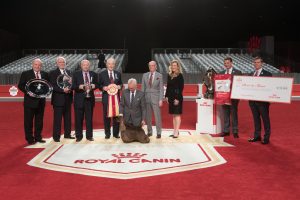
AKC President & CEO Dennis Sprung joins the presentation of BIS at the 2017 AKCNC in Orland, Fla.
President and Chief Operating Officer of the American Kennel Club since 2003, Dennis Sprung has ardently pursued projects designed to share the message of the human-canine bond.
Starting in dogs with the Afghan Hounds of Grandeur in the late 1960s, Sprung was mentored by the legendary Sunny Shay. Shay laid the foundation for his education in dogs, Sprung said. At a time when the famous Long Island kennel housed over 100 dogs, he routinely interacted with everything from puppies to veterans.
Inspiring Dreams for Everyone
“She was one of a kind,” Sprung said. “A true character in the sport. Sunny was unique, in many ways, but particularly in that she was a Breeder Owner Handler. Shirkhan’s first BIS in 1957 was at Westminster Kennel Club.” (For more history and stories about Sunny Shay and the Grandeur Afghans, listen to Michael Canalizo at https://puredogtalk.com/canalizo-ghosts-of-the-past-and-breeding-for-the-future-pure-dog-talk/)
Sharing the Human-Canine Bond
Shortly after Sprung started working for AKC as an Executive Field Rep in 1989, he proposed to the Board of Directors the program that became the AKC Humane Fund. His vision was to create an additional vehicle to serve as outreach to the public, sharing the message of the human-canine bond. The AKC Humane Fund has now grown to include grant making for parent club breed rescue, scholarships, funding for domestic violence shelters that allow pets and assistance in cases of natural disaster. (https://www.akchumanefund.org/)
Art as Outreach
Sprung is involved with the AKC Museum of Dog as a member of original planning committee and former board member. He is actively working with AKC staff to help the museum move back to NYC from its location near St. Louis, Missouri for the last 31 years. “The museum is one of the finest collections of sporting art in the world. It pays respect to our breeds and our traditions in the sport. With a location one block from Grand Central terminal, where they have 22 million visitors annually, the opportunity to grow purebred dogs is endless.” (https://www.akc.org/museum-of-the-dog/)

Sprung joins a presentation for working K9s.
On the night following the 9/11 attacks, Sprung had a brain storm.
“AKC was able to donate a portable x-ray machine and a large quantity of supplies,” Sprung said. “These were delivered by me to Ground Zero, on that very corner with smoke still rising… I’ll never forget that.”
He resolved to create a public art exhibition and fundraising opportunity. From this was born DOGNY. Honoring the search & rescue dog and handler teams, 112 dog statues were placed around New York City. In all, more than $3.5 million was raised for Search & Rescue groups nationwide. (https://www.akc.org/dogny/)
“I have to tell you. Credit goes to our entire fancy,” Sprung said. “Springfield Kennel Club was the first donor. Corporate America came through and worked with us, but our fancy was with us every step of the way.”
Building from that concept, AKC Reunite was developed, spearheaded by Delegate Pat Laurans.
“The AKC family is providing what’s needed to save dogs throughout the country,” Sprung said. The fundraising effort has placed 67 trailers across the nation. (http://www.akcreunite.org/)
“I think one of the most important things we can do is to not only look inward, but also look outward,” Sprung said. “We need to focus on our core constituency, on our mission of registration and events. But we also have to communicate with the public. We have to educate them. Be consistent in our messaging. Be transparent and continue to do the right thing. …There’s many societal changes that are affecting all of us. We’ve lost a lot of sites (for dog shows). This is no longer rural America. We have to address the fact that there are a number of territories that no longer offer point shows. We have to continue to work together.”



